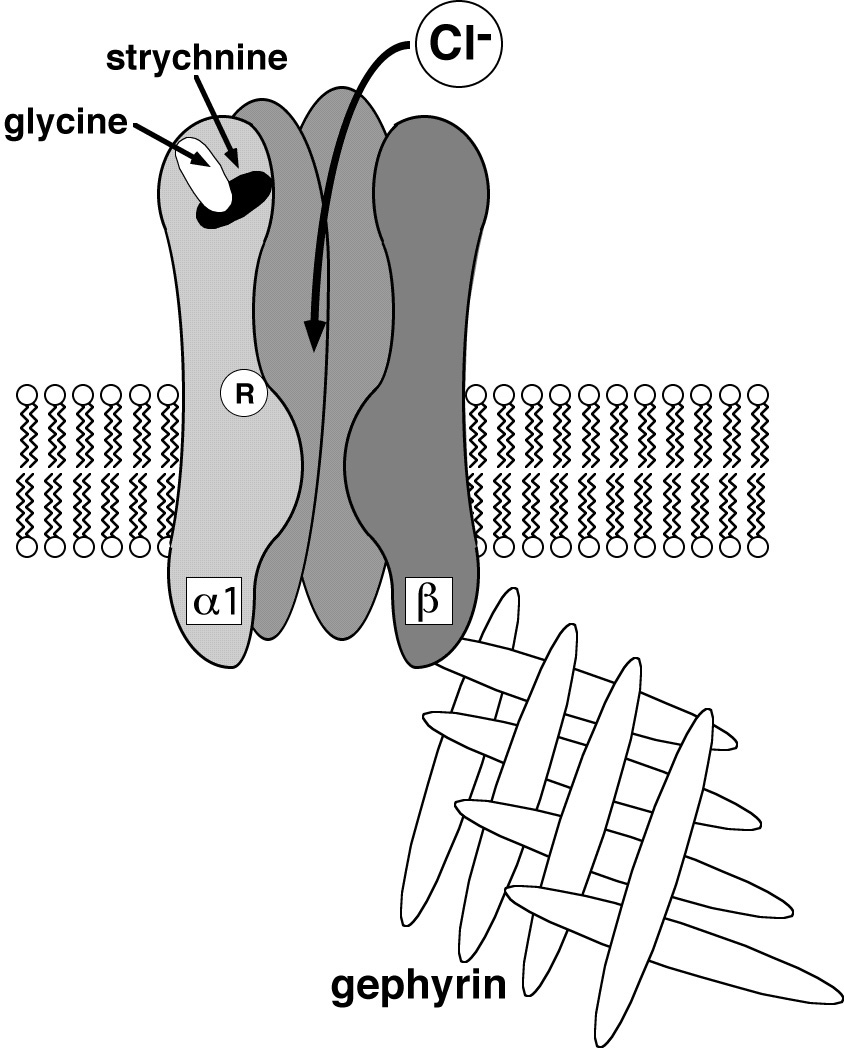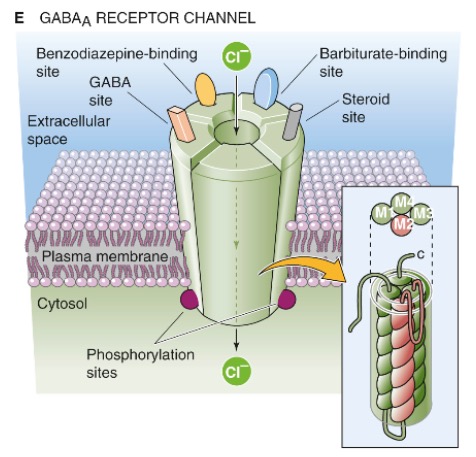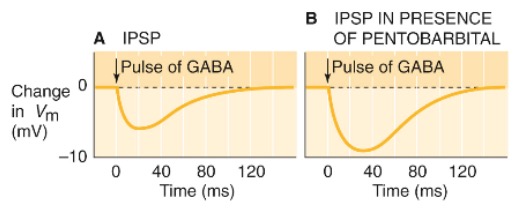Honors Human Physiology
BIOSC 1070, NROSCI 1070, MSNBIO 2070
Fall Semester 2020
BIOSC 1070, NROSCI 1070, MSNBIO 2070
Fall Semester 2020
The two major inhibitory neurotransmitters released by neurons are amino acids: GABA (gamma-aminobutyric acid) and glycine. All glycine receptors are ionotropic receptors. Most GABA receptors,which belong to the GABAa receptor subtype, are also ionotropic receptors. However, a minority of GABA receptors, which belong to the GABAb receptor subtype, are metabotropic, as they activate G-proteins.
Both GABA and glycine are reuptaken from the synaptic cleft by transporters on the axon terminal.
 |
The binding of glycine to its receptor results in the opening of a Cl- channel. Chloride is usually in much higher concentration outside of neurons, and thus opening a Cl- channel allows Cl- to move down its concentration gradient and hyperpolarize the membrane, resulting in an IPSP. All glycine receptors are relatively simple ligand-gated ion channels. Both glycine and GABAa receptors are anchored to the postsynaptic cytoskeleton by the protein gephyrin. Downregulation of this protein can affect inhibitory neurotransmission in the nervous system, resulting in neurons that are hyperexcitable, which can lead to disease states. For example, patients with temporal lobe epilepsy have abnormally low levels of gephyrin in their temporal lobes. Glycine receptors are mainly located in the spinal cord and brainstem. |
 |
GABAa receptors have many characteristics in common with glycine receptors:
GABAa receptors are located on the dendrites and cell bodies of neurons throughout the nervous system. |
A large number of common drugs exert their actions by binding to either the main receptor site of the GABAa receptor, or bind to another part of the receptor causing a change in conformation. The latter drugs are called allosteric modulators, and fall into two classes: those that amplify the effects of agonist binding to the receptor (positive allosteric modulator) and those that reduce the effects of ligand binding to the receptor (negative allosteric modulator).
 |
In the case of the GABAa receptor, a positive allosteric modulator results in more Cl- moving into the postsynaptic neuron when GABA binds to the receptor, and a negative allosteric modulator results in less Cl- moving into the postsynaptic neuron. In the example to the left, the positive allosteric modulator pentobarbital (a barbiturate) results in a larger IPSP when GABA binds to the GABAa receptor. |
Some examples of agonists and antagonists of GABAa receptors, as well as allosteric modulators, are provided below:
GABA also acts on G protein-coupled GABAb receptors. GABAb autoreceptors are located presynaptically at GABAergic synapses, and are also located on terminals that release glutamate. Binding of GABA to presynaptic GABAb receptors results in diminished opening of voltage-gated Ca2+ channels at the nerve terminal, and less release of neurotransmitter following an action potential.
However, most GABAb receptors are postsynaptic. Binding of GABA to the postsynaptic GABAb receptors results in increased conductance of K+, causing hyperpolarization of the postsynaptic neuron, such that it is less likely to generate an action potential.
The drug baclofen is a GABAb agonist. It is used to treat spasticity, a condition that will be discussed in the motor block of the course.